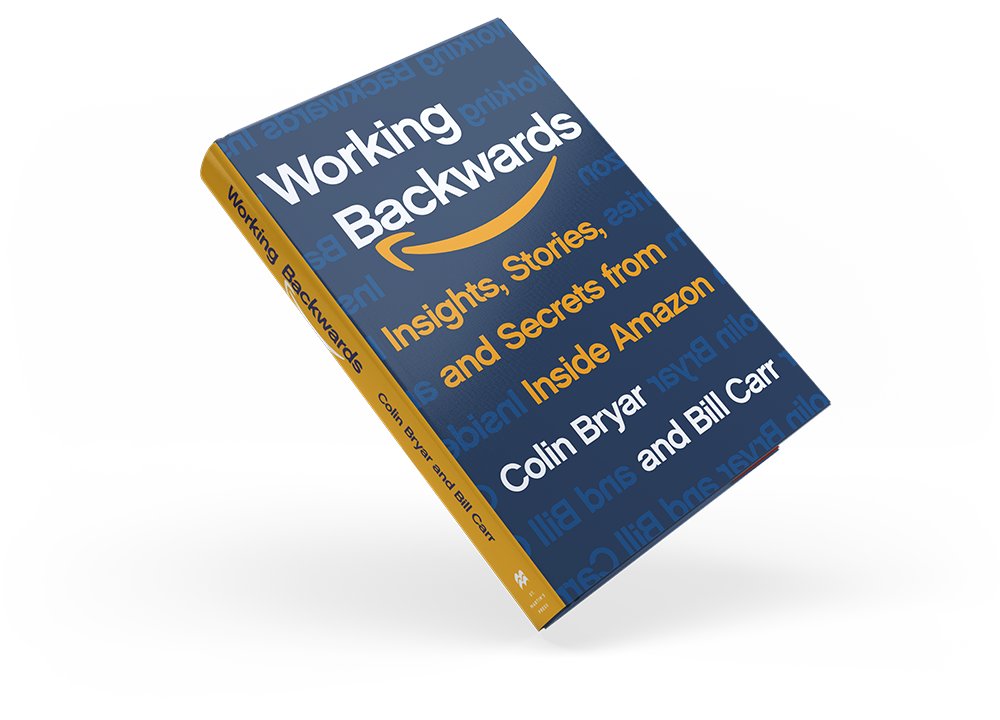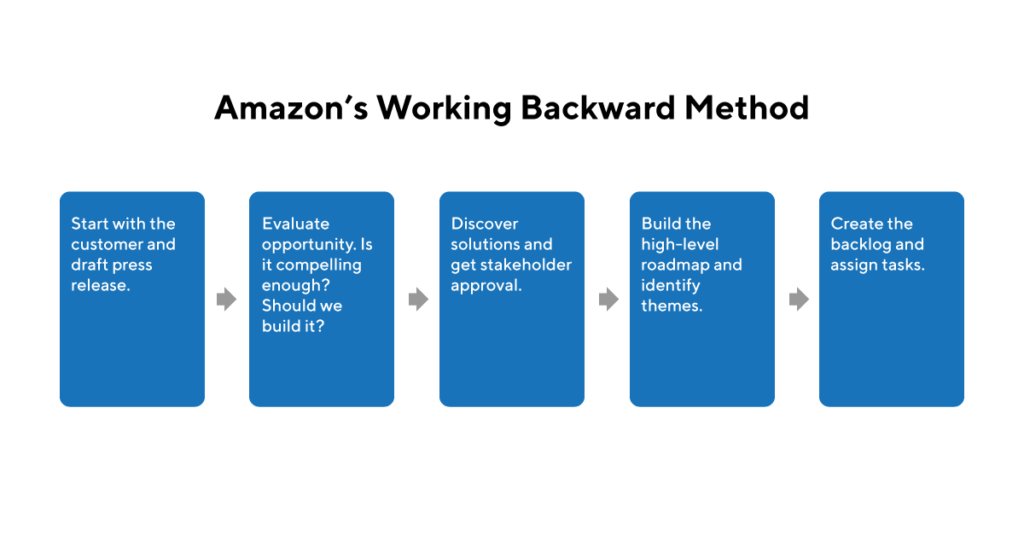1/ Amazon is famous for its writing culture:
• "Mock press releases / FAQs" for new product pitches
• "6-page memos" instead of Powerpoint
Two former Amazon execs wrote a book called "Working Backwards" detailing the philosophy.
Here are some insights
• "Mock press releases / FAQs" for new product pitches
• "6-page memos" instead of Powerpoint
Two former Amazon execs wrote a book called "Working Backwards" detailing the philosophy.
Here are some insights

2/ The "Working Backwards" playbook
Instead of creating a product then finding customers, Amazon asks "What does the customer need?" and works toward the product.
 Customer need --> Create product
Customer need --> Create product
 Create product --> Find customer
Create product --> Find customer
Instead of creating a product then finding customers, Amazon asks "What does the customer need?" and works toward the product.
 Customer need --> Create product
Customer need --> Create product Create product --> Find customer
Create product --> Find customer
3/ Write a mock press release
To determine if the customer need makes biz sense, employees write a press release:
• What problem is the new product solving
• Why it's better than existing options
To persuade a customer, the document has to be jargon-free and tell a story.
To determine if the customer need makes biz sense, employees write a press release:
• What problem is the new product solving
• Why it's better than existing options
To persuade a customer, the document has to be jargon-free and tell a story.
4/ Press release forces big thinking
You don't write a press release for an incremental improvements.
Creating a product worthy of a press release means really solving a customer problem and going after markets with large TAMs.
You don't write a press release for an incremental improvements.
Creating a product worthy of a press release means really solving a customer problem and going after markets with large TAMs.
5/ Include an FAQ in press release
Addressing every potential customer question can help identify hurdles to getting something to market...and also uncover opportunities.
Addressing every potential customer question can help identify hurdles to getting something to market...and also uncover opportunities.
6/ Why memos over Powerpoint?
Amazon famously has execs write 6-page narrative-driven memos instead of Powerpoint decks.
The practice began in 2004 when Jeff Bezos noticed nothing was being decided after 60-minute long meetings with his inner circle (AKA S-Team).
Amazon famously has execs write 6-page narrative-driven memos instead of Powerpoint decks.
The practice began in 2004 when Jeff Bezos noticed nothing was being decided after 60-minute long meetings with his inner circle (AKA S-Team).
7/ Memos > Powerpoint #1: More info density
People read faster than people can talk meaning that -- for a 60 minute meeting -- reading a memo before discussing an issue conveys much more information (10x more per one of the book's authors).
Narratives are also more memorable.
People read faster than people can talk meaning that -- for a 60 minute meeting -- reading a memo before discussing an issue conveys much more information (10x more per one of the book's authors).
Narratives are also more memorable.
8/ Memos > Powerpoint #2: Ideas > Charisma
In Powerpoint presentations, a great presenter can sell a bad idea. Conversely, a poor presenter may be unable to sell a great idea.
In a memo, the idea wins.
In Powerpoint presentations, a great presenter can sell a bad idea. Conversely, a poor presenter may be unable to sell a great idea.
In a memo, the idea wins.
9/ Memos > Powerpoint #3: Better analysis
Powerpoint's hierarchical (and sequential) structure is not ideal to address complex issues.
Narrative-driven memos can be multi-causal and provide a 360-degree view on a topic.
Powerpoint's hierarchical (and sequential) structure is not ideal to address complex issues.
Narrative-driven memos can be multi-causal and provide a 360-degree view on a topic.
10/ Memos > Powerpoint #4: Focusses a meeting
If every meeting participant spends the first 1/3rd of a 60-minute meeting reading, there is a huge transfer of information.
It's a forcing function to get everyone on the same page and makes the remaining 40-minutes high quality.
If every meeting participant spends the first 1/3rd of a 60-minute meeting reading, there is a huge transfer of information.
It's a forcing function to get everyone on the same page and makes the remaining 40-minutes high quality.
11/ Memos > Powerpoint #5: Shared understanding
Whether or not one agrees with everything in a memo, focussed reading of a document provides a shared knowledge base with which to begin discussions.
Further, someone can quickly "get up to speed" by reading past memos.
Whether or not one agrees with everything in a memo, focussed reading of a document provides a shared knowledge base with which to begin discussions.
Further, someone can quickly "get up to speed" by reading past memos.
12/ Memos > Powerpoint #6: Decisions need narrative
Powerpoint and Excel are great at communicating data.
However, at the executive level, you are making complex decisions and leading. This requires a mastery of narrative (AKA memo writing) to persuade stakeholders.
Powerpoint and Excel are great at communicating data.
However, at the executive level, you are making complex decisions and leading. This requires a mastery of narrative (AKA memo writing) to persuade stakeholders.
13/ Writing is crucial to help a company scale
At 20 employees, Bezos could be in every meeting. At 1k+ employees, he needed a way to “inject his lens of thinking” into the organization.
An archive of writing helps encode the thinking across the company (e.g. Annual letters)
At 20 employees, Bezos could be in every meeting. At 1k+ employees, he needed a way to “inject his lens of thinking” into the organization.
An archive of writing helps encode the thinking across the company (e.g. Annual letters)
14/ If you enjoy business breakdowns (and dumb memes), def HIT THAT FOLLOW.
For more on the book, check this a16z podcast:
https://open.spotify.com/episode/0jU0dAZORvCB9zbTBz4keH
Here's the book: https://www.amazon.com/Working-Backwards-Insights-Stories-Secrets/dp/1250267595
For more on the book, check this a16z podcast:
https://open.spotify.com/episode/0jU0dAZORvCB9zbTBz4keH
Here's the book: https://www.amazon.com/Working-Backwards-Insights-Stories-Secrets/dp/1250267595
15/ FYI, if you liked this Amazon thread, you might like this thread about Netflix's culture: https://twitter.com/TrungTPhan/status/1303392456314990592?s=20
16/ The email Jeff Bezos sent to his team in June 2004 explaining why they had to write memos instead of Powerpoint

 Read on Twitter
Read on Twitter




